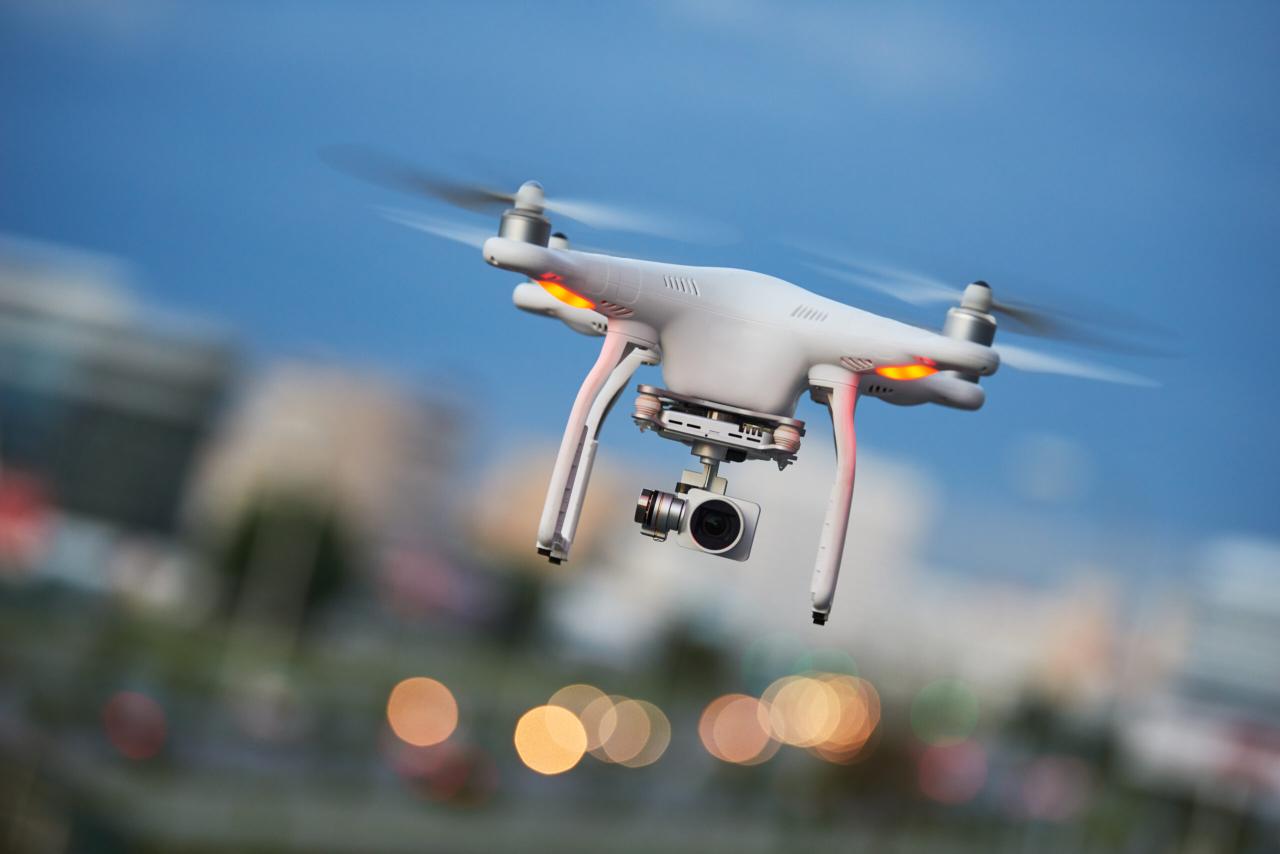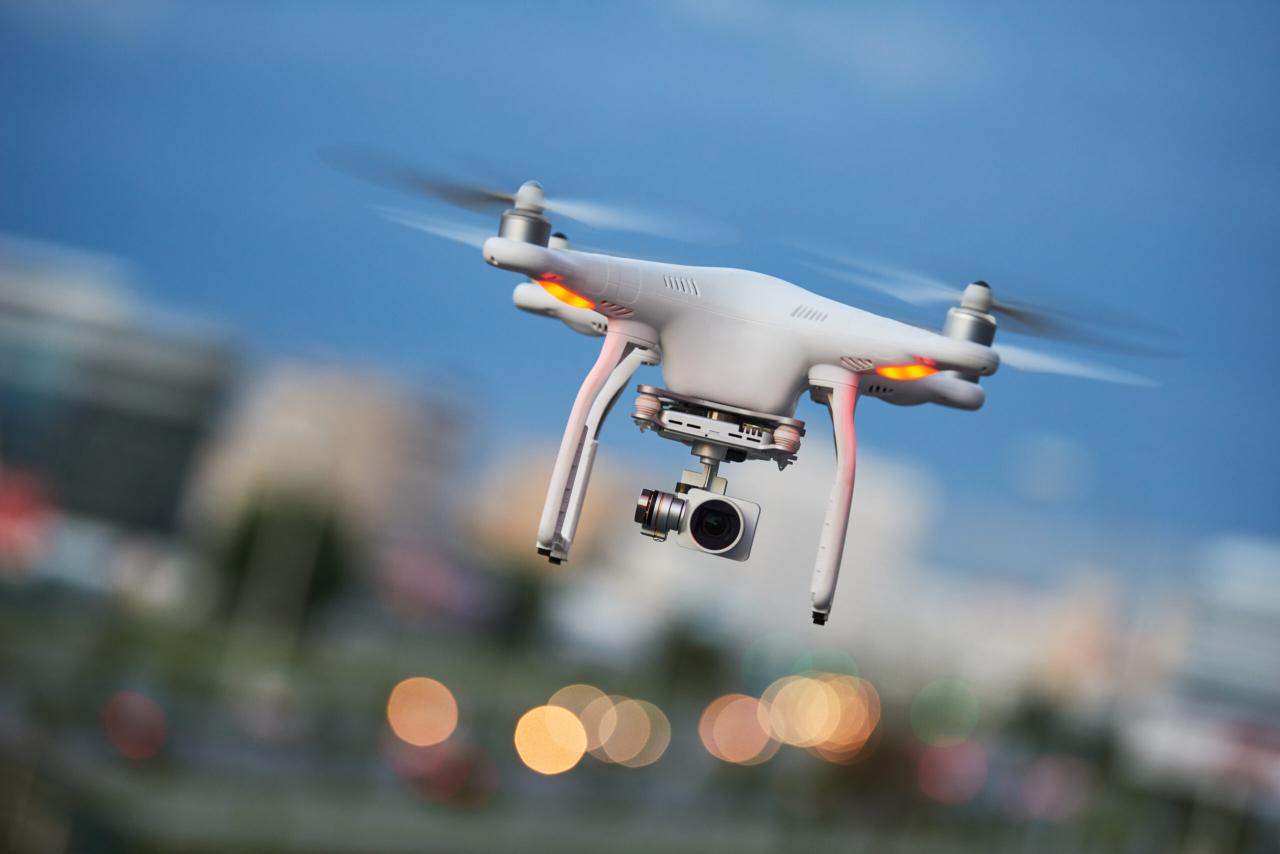Drone crash: It’s a phrase that evokes images of falling technology, potential damage, and frustrating setbacks. But understanding why drones crash isn’t just about fixing broken machines; it’s about ensuring safe operation and responsible use of this increasingly prevalent technology. This guide dives into the multifaceted world of drone crashes, exploring common causes, preventative measures, and the consequences of these incidents.
We’ll cover everything from mechanical malfunctions and pilot error to weather impacts and the role of software.
From understanding the different types of crashes and their specific causes to exploring the legal and economic ramifications, we aim to provide a comprehensive resource for drone enthusiasts, pilots, and anyone interested in the safety aspects of unmanned aerial vehicles (UAVs). We’ll also delve into the latest technological advancements designed to prevent crashes and discuss effective investigation techniques to determine the root causes of incidents.
Drone Crash Causes

Understanding why drones crash is crucial for improving safety and preventing future incidents. Several factors, ranging from mechanical issues to pilot error, contribute to these accidents. This section explores the most common causes, providing insights to improve drone operation and maintenance.
Mechanical Failures
Mechanical failures are a significant contributor to drone crashes. These can include issues with the rotors, motors, electronic speed controllers (ESCs), or the airframe itself. Propeller damage, motor burnout, and ESC malfunctions can lead to loss of control and subsequent crashes. Regular inspections and preventative maintenance are key to mitigating these risks.
Weather Conditions
Adverse weather significantly impacts drone stability and increases the likelihood of crashes. Strong winds, heavy rain, and snow can overwhelm the drone’s capabilities, leading to loss of control and potentially damaging collisions. Pilots should always check weather forecasts before flights and avoid flying in hazardous conditions.
Human Error
Human error accounts for a substantial portion of drone accidents. This includes issues like improper pre-flight checks, poor piloting skills, and neglecting safety guidelines. For example, failing to account for wind conditions, exceeding the drone’s range, or losing visual contact can all result in crashes. Proper training and adherence to best practices are essential to minimize human error.
Software Glitches
Software glitches within the drone’s firmware or associated applications can also lead to crashes. These glitches might cause unexpected maneuvers, loss of control, or malfunctions in critical systems. Keeping the drone’s software updated and using reliable applications are important preventative measures.
Types of Drone Crashes and Their Causes
| Crash Type | Cause | Description | Mitigation |
|---|---|---|---|
| Rotor Failure | Mechanical failure (propeller damage, motor malfunction) | Sudden loss of lift, uncontrolled descent. | Regular maintenance, pre-flight checks. |
| Loss of Signal | Range exceeded, interference | Drone loses connection with controller, resulting in uncontrolled flight. | Maintain line of sight, use signal boosters. |
| Collision | Pilot error, obstacle avoidance failure | Impact with an obstacle (building, tree, person). | Proper flight planning, obstacle avoidance systems. |
| Battery Failure | Low battery, malfunction | Sudden loss of power, uncontrolled descent. | Monitor battery levels, use spare batteries. |
Drone Crash Prevention

Preventing drone crashes requires a multi-faceted approach encompassing thorough pre-flight checks, comprehensive pilot training, and adherence to safety regulations. By combining careful planning with technological advancements, we can significantly reduce the risk of accidents.
Pre-Flight Drone Inspection Checklist
A thorough pre-flight checklist is paramount to ensuring safe drone operation. This checklist should include:
- Visual inspection of the drone for any physical damage.
- Checking the battery level and ensuring proper charging.
- Verifying the functionality of all motors and propellers.
- Testing the GPS signal and ensuring a stable connection.
- Reviewing weather conditions and confirming suitability for flight.
- Checking the functionality of the remote controller and its connection to the drone.
Pilot Training and Certification
Proper pilot training is crucial for safe drone operation. Training should cover topics such as pre-flight checks, emergency procedures, and understanding airspace regulations. Certification demonstrates competency and helps ensure responsible drone usage.
Best Practices for Drone Operation in Various Environments
Operating drones safely requires adapting to different environments. In urban areas, this means being aware of buildings, people, and other obstacles. In rural areas, considerations might include wildlife, terrain, and potential signal interference.
- Urban Environments: Fly at lower altitudes, maintain visual line of sight, and be mindful of air traffic.
- Rural Environments: Be aware of uneven terrain, potential signal loss, and wildlife.
Technological Advancements Enhancing Drone Safety
Technological advancements continuously improve drone safety. Obstacle avoidance systems, GPS technology, and redundancy systems all contribute to minimizing crash risks.
- Obstacle Avoidance: Sensors and algorithms allow drones to detect and avoid obstacles autonomously.
- Redundancy Systems: Multiple systems ensure continued operation even if one component fails.
Safety Regulations and Guidelines
Adhering to relevant safety regulations and guidelines is non-negotiable for responsible drone operation. These regulations often cover airspace restrictions, flight limitations, and operational procedures.
- Register your drone with the appropriate authorities.
- Obtain necessary permits or licenses before flying.
- Always respect airspace restrictions.
Drone Crash Impact
The consequences of drone crashes can be significant, impacting property, the environment, and even human lives. Understanding these potential impacts is essential for responsible drone operation and effective risk mitigation.
Potential Damage from Drone Crashes
The damage caused by a drone crash varies depending on several factors, including the size and weight of the drone, the speed of impact, and the location of the crash. Crashes in populated areas pose a higher risk of injury or property damage compared to crashes in remote locations. Crashes in sensitive environments, such as nature reserves, can cause significant ecological damage.
Environmental Impact of Drone Crashes
The environmental impact of a drone crash depends on the drone’s materials and the location of the crash. A crash in a sensitive ecosystem, such as a wetland or a coral reef, could have devastating consequences. The materials used in drone construction, including plastics and batteries, can also pose environmental risks if not properly disposed of.
Legal and Regulatory Consequences
Drone accidents can result in legal and regulatory consequences, including fines, license suspension, or even criminal charges depending on the severity of the incident and any resulting damage or injury. Operators are responsible for understanding and adhering to all relevant regulations.
Economic Implications
Drone crashes can have significant economic implications, including repair costs for the drone, potential damage to property or other assets, and potential legal fees. In cases of injury or death, the financial consequences can be substantially greater.
Drone crashes can be a bummer, especially when you’ve invested in some seriously cool tech. If you’re flying a DJI drone in Canada, check out the resources available at dji drone canada to help prevent mishaps. Understanding your drone’s limitations and following safety guidelines is key to avoiding a costly and potentially dangerous drone crash.
Insurance Policies
Insurance policies can mitigate the financial risks associated with drone crashes. Comprehensive insurance coverage can help cover repair costs, liability claims, and other expenses related to drone accidents. Choosing appropriate insurance is a vital aspect of responsible drone ownership.
Drone Crash Investigation

Investigating a drone crash systematically helps determine the root cause, allowing for improvements in safety protocols and technological advancements. This process involves several steps, from securing the crash site to analyzing data and interviewing witnesses.
Steps in Investigating a Drone Crash
A thorough investigation typically involves the following steps:
- Securing the crash site and preserving evidence.
- Documenting the scene with photographs and videos.
- Collecting data from the drone’s flight logs and any video recordings.
- Interviewing witnesses and gathering information about the circumstances of the crash.
- Analyzing the collected data to determine the probable cause of the crash.
- Preparing a comprehensive report detailing the findings of the investigation.
Role of Data Analysis
Data analysis plays a crucial role in determining the cause of a drone crash. Flight logs provide valuable information about the drone’s flight path, altitude, speed, and other parameters. Video recordings can provide visual evidence of the events leading up to the crash.
Key Stakeholders
Several stakeholders are involved in drone crash investigations, including law enforcement agencies, drone manufacturers, insurance companies, and aviation authorities. Each stakeholder plays a specific role in gathering information and determining responsibility.
Reconstructing the Events
Reconstructing the events leading up to a drone crash involves piecing together information from various sources, including witness accounts, flight logs, video recordings, and physical evidence from the damaged drone. This process aims to create a timeline of events leading to the accident.
Drone Crash Investigation Flowchart
A flowchart would visually represent the steps involved, starting with the initial report of the crash, progressing through evidence collection and analysis, and culminating in the final report and recommendations.
Drone Crash Mitigation Technologies
Technological advancements play a vital role in mitigating the risk of drone crashes. Several systems and features are designed to enhance drone safety and prevent accidents. These range from basic GPS systems to more sophisticated AI-powered collision avoidance technologies.
Systems Designed to Prevent Crashes, Drone crash

Several systems are designed to prevent drone crashes. These include:
- GPS: Provides location data, enabling precise navigation and return-to-home functionality.
- Obstacle Avoidance: Uses sensors (ultrasonic, lidar, camera) to detect and avoid obstacles.
- Redundancy Systems: Multiple systems ensure continued operation even if one component fails.
Effectiveness of Collision Avoidance Technologies
The effectiveness of collision avoidance technologies varies depending on the technology used, environmental conditions, and the speed and maneuverability of the drone. LiDAR systems generally offer superior performance compared to ultrasonic sensors in complex environments.
Role of Redundancy Systems
Redundancy systems are crucial for enhancing drone safety. These systems provide backup components or functions, ensuring continued operation even if a primary system fails. For example, a drone might have redundant power systems or multiple GPS receivers.
Potential of Artificial Intelligence
Artificial intelligence (AI) holds significant potential for preventing drone crashes. AI-powered systems can analyze sensor data in real-time, predict potential hazards, and make autonomous decisions to avoid collisions or execute safe emergency landings.
Emergency Landing Procedures
Emergency landing procedures vary depending on the situation and the drone’s capabilities. These procedures might involve activating a return-to-home function, initiating an autonomous landing, or manually guiding the drone to a safe landing zone.
Illustrative Examples of Drone Crashes
Analyzing real-world drone crashes provides valuable lessons for improving safety protocols and preventing future accidents. The following examples highlight different causes and consequences, emphasizing the importance of careful planning, proper maintenance, and adherence to safety regulations.
Example 1: A DJI Phantom 4 Pro Crash Due to Strong Winds
A DJI Phantom 4 Pro crashed during a filming session in a coastal area due to unexpectedly strong winds. The drone was unable to maintain its position and was blown into the sea, resulting in significant water damage and the total loss of the drone. The lesson learned is to always check weather forecasts before flight and avoid flying in high-wind conditions.
Drone crashes can be a real bummer, especially when you’re trying to get that perfect shot. But figuring out why they happen is key, and that’s where places like the reality ai lab come in handy. They’re doing some awesome work on AI-powered drone safety, which could drastically reduce the number of crashes we see. So next time your drone takes a tumble, remember there’s tech being developed to prevent that from happening again.
The damage included the complete destruction of the drone’s electronics and the propeller.
Example 2: A Parrot Anafi Crash Due to Pilot Error
A Parrot Anafi crashed in a park due to pilot error. The pilot lost visual contact with the drone while attempting a complex maneuver, resulting in a collision with a tree. The drone sustained significant damage to its propellers and camera. The lesson learned is the importance of maintaining visual line of sight at all times and avoiding complex maneuvers in areas with many obstacles.
The drone’s body was also cracked.
Example 3: A Autel Evo II Crash Due to Battery Failure
An Autel Evo II crashed during a long-distance flight due to unexpected battery failure. The drone experienced a sudden loss of power and plunged to the ground, resulting in damage to the camera gimbal and airframe. The lesson learned highlights the need for regular battery maintenance, using high-quality batteries, and monitoring battery levels throughout the flight. The camera gimbal was broken and the drone’s landing gear was bent.
Last Point
Ultimately, preventing drone crashes requires a multi-pronged approach. Regular maintenance, rigorous pilot training, adherence to safety regulations, and leveraging advanced safety technologies are all crucial components. By understanding the complexities of drone operation and the potential consequences of accidents, we can work towards a future where drone technology is both innovative and safe. Remember, responsible drone operation isn’t just about following rules; it’s about fostering a culture of safety and minimizing risks for everyone.
FAQ Overview
What should I do immediately after a drone crash?
Ensure your safety and the safety of others. Assess any damage. Document the scene with photos and videos. Contact relevant authorities if necessary (e.g., FAA, local law enforcement).
How much does drone insurance typically cost?
Costs vary based on drone value, coverage level, and pilot experience. Expect to pay anywhere from a few hundred to several thousand dollars annually.
Are there specific regulations for reporting drone crashes?
Yes, depending on the severity of the crash and any damage or injuries involved, reporting to relevant authorities (e.g., FAA in the US) may be mandatory. Check your local regulations.
Drone crashes can be frustrating, especially when you lose footage. To avoid that, make sure you have a reliable way to back up your recordings; after all, you’ll need a solid way to get those videos off your device. That’s where a good printer/scanner comes in handy for printing photos and checking the SD card, and setting up the wifi on your Canon TS3420 is key – check out this guide for help: canon ts3420 wifi setup.
Once your printer is set up, you can easily transfer and save your drone footage for safekeeping, preventing any potential data loss from another unfortunate drone crash.
Can I repair my drone myself after a crash?
Minor repairs are sometimes possible, but for significant damage, it’s best to contact a professional repair service or the manufacturer. Improper repairs can compromise safety.
